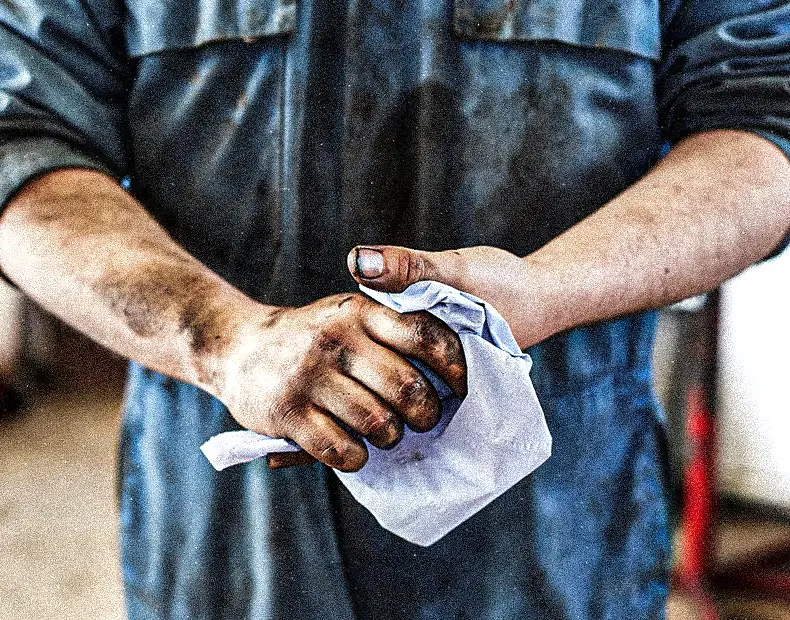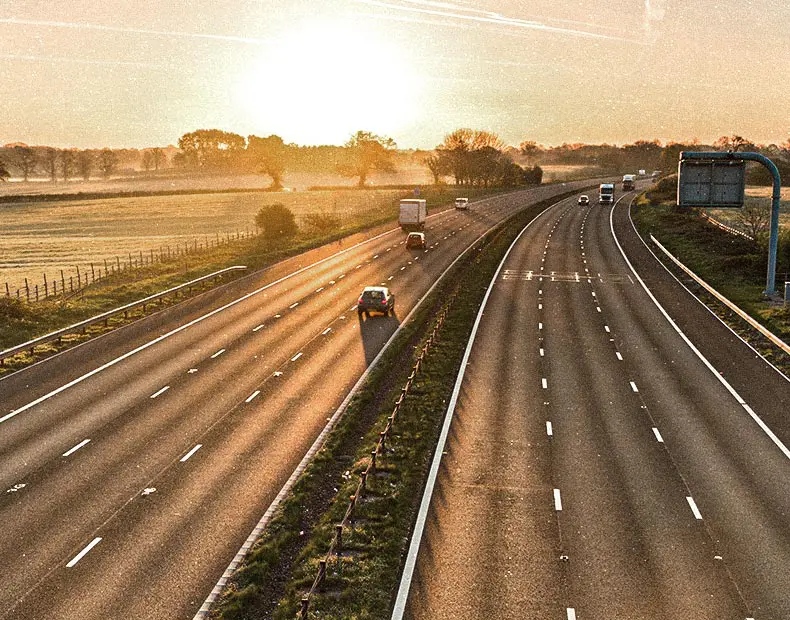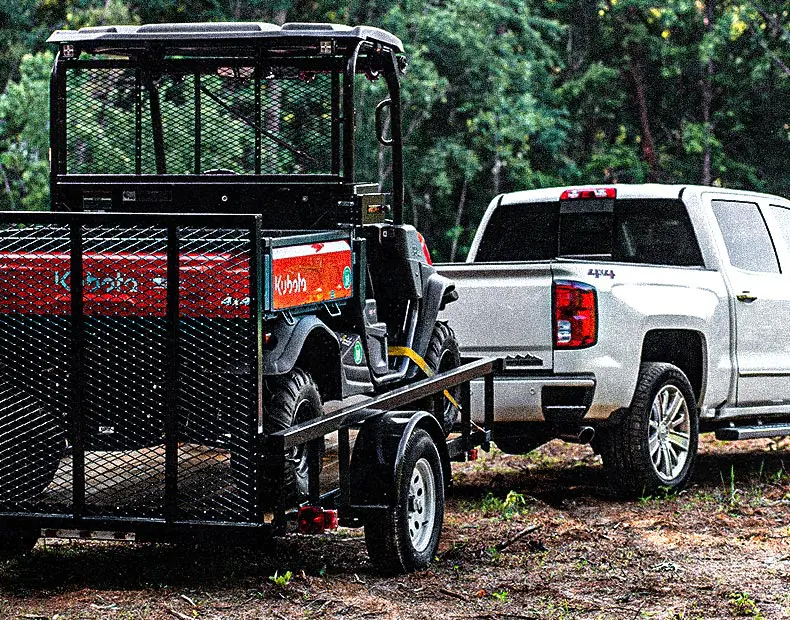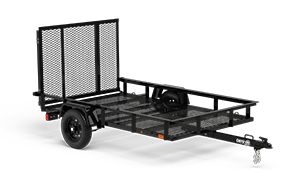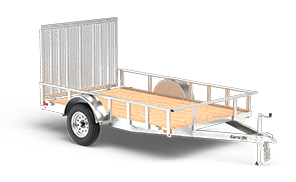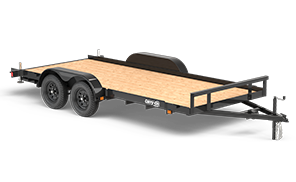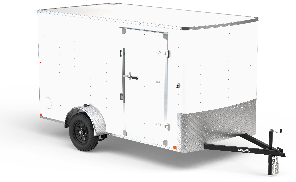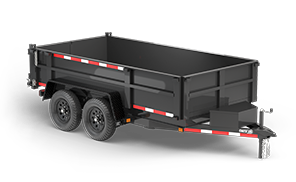A car hauler is no different from any other type of trailer. Whether you are transporting your antique car to the local car show or need to tow a car to the mechanic, when you’re using a car hauler safety must be your top priority. Let’s take a look at how to load and tow a car hauler safely.
The first step is to prepare your car hauler for loading. This means closely inspecting the floor of the trailer, tie down rings and track system for damage, looseness or signs of bending. Damaged or loose tie down rings or tracks can break, causing the cargo to become loose, and loose cargo can lead to a shift in the center of gravity. This shift can result in loss of control of your car hauler, so be sure to test these items before loading. Never use damaged or loose tie downs or tracks to secure your cargo.
Next, make sure your tow vehicle and car hauler are parked in-line with each other on a firm, level surface, and be sure to engage the parking brake on your tow vehicle. Clear the area around the car hauler, and then couple it to your tow vehicle. Once coupled, be sure to check that the coupler and safety chains are securely attached to the towing vehicle – you should never attempt to load a vehicle onto a car hauler that hasn’t been coupled to a tow vehicle. Also, be sure to check that the car hauler’s electrical wiring is plugged in and working properly.
Now you’re ready to load your vehicle onto the car hauler. Use the following steps to ensure you load your car hauler safely:
- Lower the rear stabilizers if your car hauler is equipped, or place blocking under the rear of your car hauler. This will ensure that the weight of the vehicle you are loading will not raise the front of the car hauler during the process.
- Remove the ramps from the storage position and secure them to the end of your car hauler. Adjust their position as needed to align them with the tires of the vehicle or equipment you are loading.
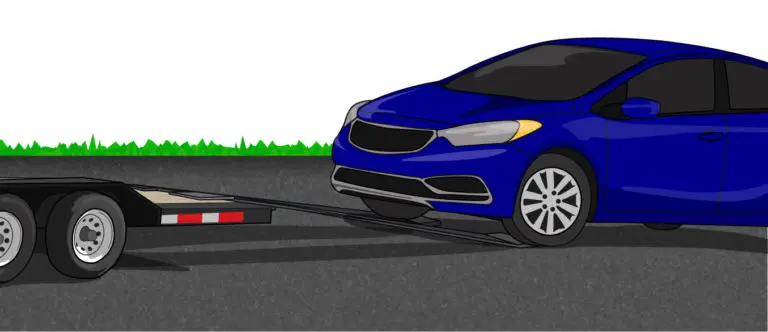
- Drive the vehicle or equipment up the ramps and onto your car hauler slowly. Remember your cargo should be loaded with approximately 60% of the weight in the front half of the trailer. If someone is helping you during the loading process, make sure they stand to the side and a safe distance from the car hauler.
- Put your vehicle or equipment to be towed in park and engage the parking brake.
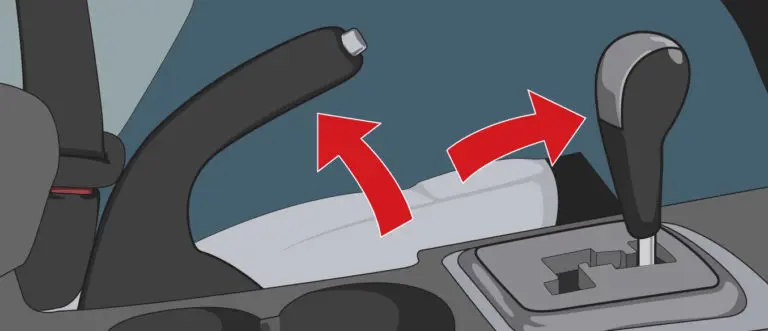
- Secure the vehicle or equipment to the car hauler with the appropriate straps, chains or other tensioning devices.
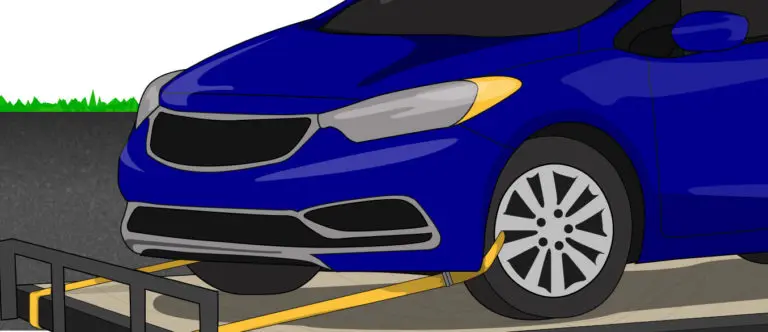
- Remove the ramps and return them to their storage position.
- Raise the rear stabilizer, or remove the blocking under the rear of the trailer.
Now you’re ready to tow your car hauler. Remember the following steps to take while on the road and at each stop:
- Maintain a speed of 55 miles per hour or less.
- Stop often for rest. At each stop, be sure to check:
- Tow vehicle and trailer connections;
- Towing hitch and hitch-ball for proper tightness;
- Lights to ensure they are connected and working;
- Tires for correct pressure;
- Load security – make adjustments to straps, chains or other tension devices as necessary.
- Anticipate stops and brake early.
- Always wear your seatbelt.
Once you’ve arrived at your destination and have parked on a firm, level surface, simply lower the rear stabilizer or put the blocking under the rear of the car hauler and put the ramps into place. Remove straps, chains or tensioning devices, and start the vehicle or equipment to be unloaded. Disengage the brake and slowly back down the ramps.
Loading and towing a car hauler must be done with the highest level of care. Consult your owner’s manual or your dealer with any questions or concerns regarding your particular car hauler.

